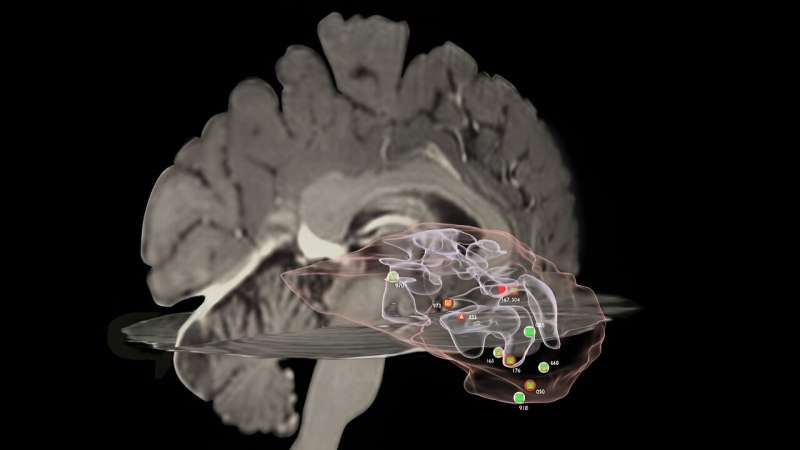This article has been reviewed according to Science X's editorial process and policies. Editors have highlighted the following attributes while ensuring the content's credibility:
fact-checked
peer-reviewed publication
trusted source
proofread
Mapping cell behaviors in high-grade glioma to improve treatment

High-grade gliomas are cancerous tumors that spread quickly in the brain or spinal cord. In a new study led by Mayo Clinic, researchers found invasive brain tumor margins of high-grade glioma (HGG) contain biologically distinct genetic and molecular alterations that point to aggressive behavior and disease recurrence. The findings suggest insights into potential treatments that could modify the course of the disease.
The study, published in Nature Communications, profiled 313 tumor biopsies from 68 HGG patients using genomics (study of genes), transcriptomics (study of gene expression at the mRNA level) and magnetic resonance imaging (MRI).
Glioma is a growth of cells that starts in the brain or spinal cord. The invasive margins of HGG have long remained a mystery due to the difficulties in surgical biopsy of these regions. The aggressive nature of most gliomas, and the visual and textural similarities between the affected regions and normal tissue, create a challenge for neurosurgeons during removal of the tumor. Some glioma cells may get left behind.
The cells in a glioma look like healthy brain cells called glial cells. As a glioma grows, it forms a mass of cells called a tumor. The tumor can grow to press on brain or spinal cord tissue, causing a range of symptoms. There are many types of glioma. Some grow slowly and aren't considered to be cancers. Others are considered cancerous. Malignant gliomas grow quickly and can invade healthy brain tissue.
Leland Hu, M.D., a neuroradiologist at Mayo Clinic in Arizona, says the study also shows that MRI techniques, such as dynamic susceptibility contrast and diffusion tensor imaging, can help distinguish between the genetic and molecular alterations of invasive tumors, which is important for clinically characterizing areas that are difficult to surgically biopsy.
"We need to understand what is driving tumor progression," says Dr. Hu. "Our results demonstrate an expanded role of advanced MRI for clinical decision-making for high-grade glioma."
The study also provides insight into resistance to treatment that could improve future outcomes.
"Our hope is that these clinical MRI techniques will lead to improved diagnosis, prognosis and treatment," says Nhan Tran, Ph.D., a cancer biologist in the Department of Cancer Biology at Mayo Clinic in Arizona. "We are looking at this research through the lens of therapeutic decision-making for patients."
The entire dataset, including genomics, transcriptomics and MRI, is publicly available to other groups and institutions as a resource to fuel new discoveries beyond what Dr. Hu and colleagues have reported in the initial manuscript.
More information: Leland S. Hu et al, Integrated molecular and multiparametric MRI mapping of high-grade glioma identifies regional biologic signatures, Nature Communications (2023). DOI: 10.1038/s41467-023-41559-1



















